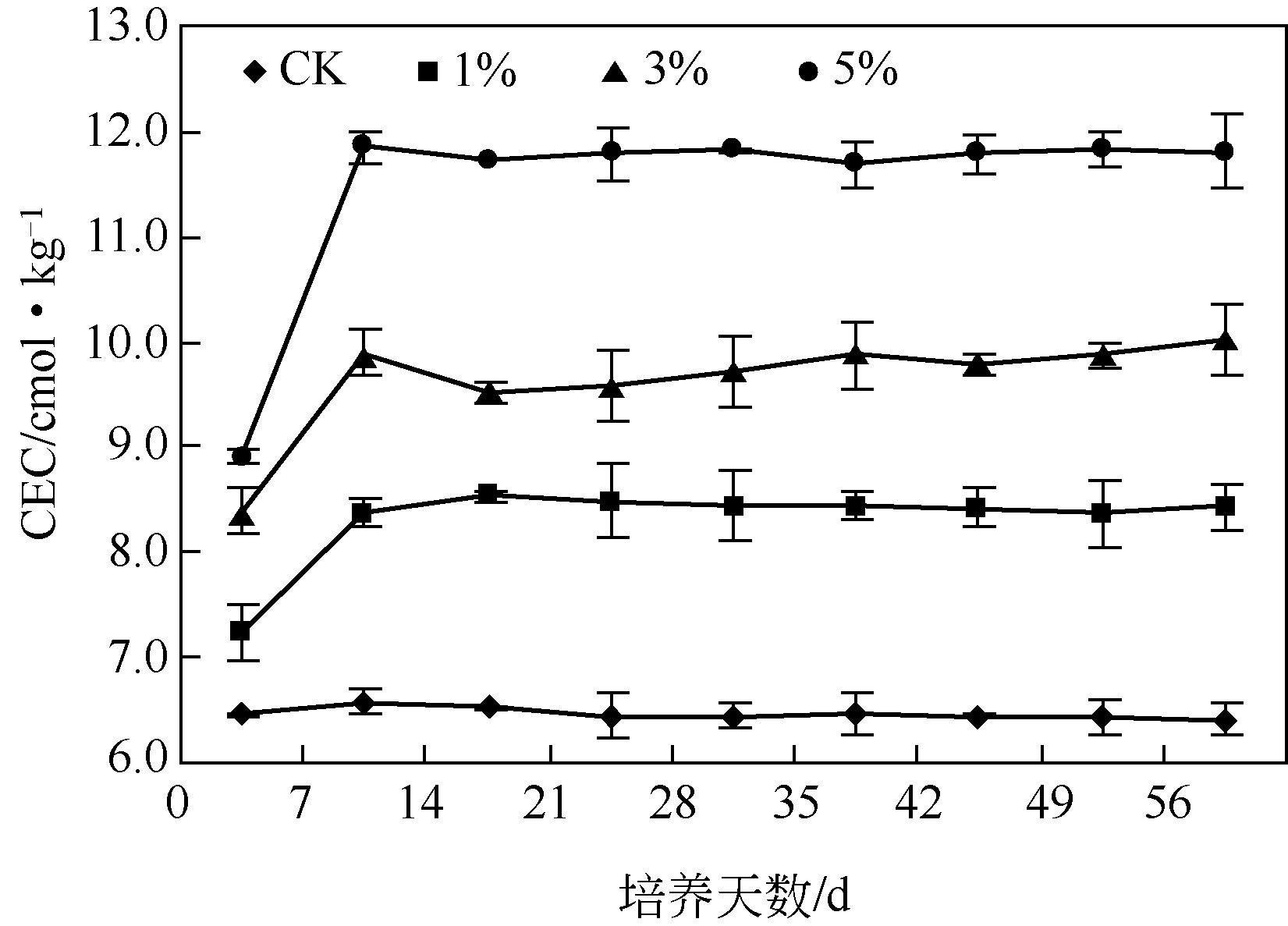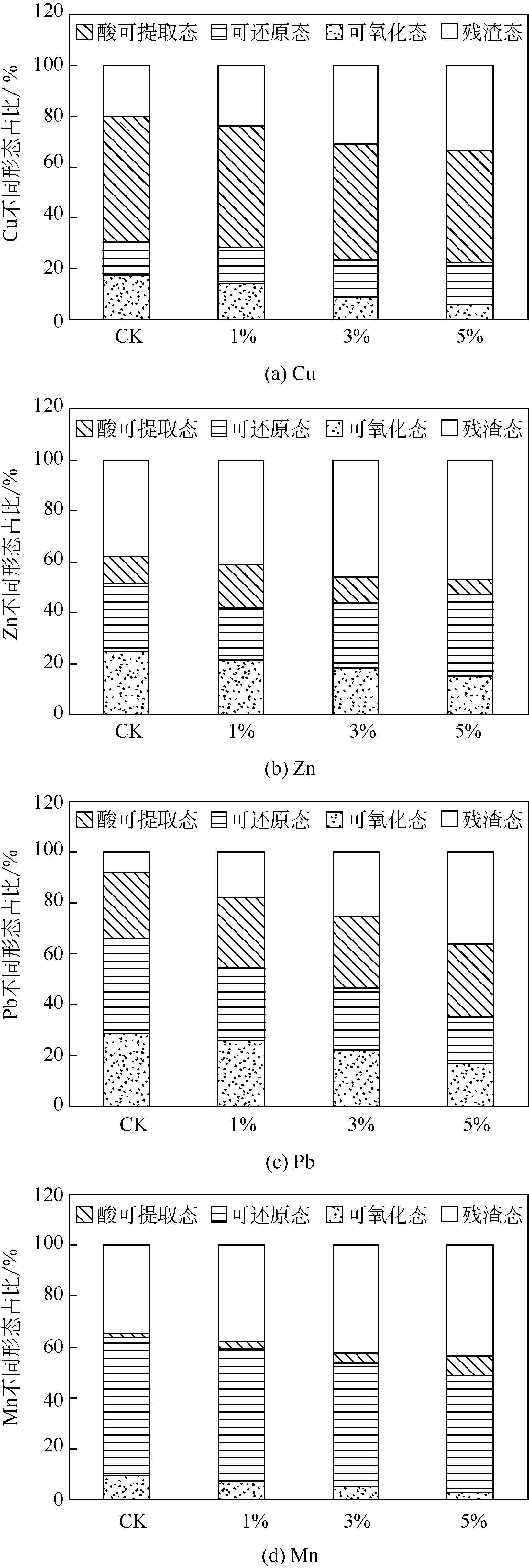| 1 |
CANDEIAS C , MELO R , ÁVILA P F , et al . Heavy metal pollution in mine-soil-plant system in S. Francisco de Assis-Panasqueira mine (Portugal)[J]. Applied Geochemistry, 2014, 44(3): 12-26.
|
| 2 |
黄小娟, 江长胜, 郝庆菊 . 重庆溶溪锰矿区土壤重金属污染评价及植物吸收特征[J]. 生态学报, 2014, 34(15): 4201-4211.
|
|
HUANG X J , JIANG C S , HAO Q J . Assessment of heavy metal pollutions in soils and bioaccumulation of heavy metals by plants in Rongxi Manganese mineland of Chongqing[J]. Acta Ecologica Sinica, 2014, 34(15): 4201-4211.
|
| 3 |
徐粲然, 卢滇楠, 刘永民 . 生物钝化修复镉污染土壤研究进展[J]. 化工进展, 2014, 33(8): 2174-2179.
|
|
XU C R , LU D N , LIU Y M . Research advance in the biostabilization remediation of cadmium contaminated soil[J]. Chemical Industry and Engineering Progress, 2014, 33(8): 2174-2179.
|
| 4 |
SUMAN RAJ D S , APARNA C , REKHA P , et al . Stabilization and solidification technologies for the remediation of contaminated soils and sediments: an overview[J]. Land Contamination and Reclamation, 2005, 13(1): 23-48.
|
| 5 |
张小凯, 何丽芝, 陆扣萍, 等 . 生物质炭修复重金属及有机物污染土壤的研究进展[J]. 土壤, 2013, 45(6): 970-977.
|
|
ZHANG X K , HE L Z , LU K P , et al . Use of biochar for remediation of soils contaminated with heavy metals and organic pollutants: a review[J]. Soils, 2013, 45(6): 970-977.
|
| 6 |
RIZWAN M S , IMTIAZ M , CHHAJRO M A , et al . Influence of pyrolytic and non-pyrolytic rice and castor straws on the immobilization of Pb and Cu in contaminated soil[J]. Environmental Technology, 2016, 37(21): 2679-2688.
|
| 7 |
荆延德, 巩晨, 孙小银, 等 . 棉花、花生秸秆生物炭对棕壤中Cu(Ⅱ)运移的影响[J]. 水土保持通报, 2016, 36(3): 50-55.
|
|
JING Y D , GONG C , SUN X Y , et al . Effects of cotton and peanut straw biochar on Cu(Ⅱ) migration in brown soil[J]. Bulletin of Soil and Water Conservation, 2016, 36(3): 50-55.
|
| 8 |
HOUBEN D , EVRARD L , SONNET P . Beneficial effects of biochar application to contaminated soils on the bioavailability of Cd, Pb and Zn and the biomass production of rapeseed (Brassica napus L.)[J]. Biomass & Bioenergy, 2013, 57(11): 196-204.
|
| 9 |
张连科, 刘心宇, 王维大, 等 . 两种油料作物秸秆生物炭对土壤中铅的钝化修复[J]. 生态环境学报, 2018, 27(1): 166-173.
|
|
ZHANG L K , LIU X Y , WANG W D , et al . Passivation and remediation of lead in soil by biochar from two oil crops[J]. Journal of Ecology and Environment, 2018, 27(1): 166-173.
|
| 10 |
FELLET G , MARMIROLI M , MARCHIOL L . Elements uptake by metal accumulator species grown on mine tailings amended with three types of biochar[J]. Science of the Total Environment, 2014, 468-469:598-608.
|
| 11 |
段丽丽 . 白云鄂博矿区土壤重金属污染地球化学评价[J]. 山东理工大学学报(自然科学版), 2012, 26(6): 23-28.
|
|
DUAN L L . Pollution assessments of heavy metals in soils in the mining area of Bayan Obo[J]. Journal of Shandong University of Technology(Natural Science Edition) , 2012, 26(6): 23-28.
|
| 12 |
徐楠楠, 林大松, 徐应明, 等 . 玉米秸秆生物炭对Cd2+的吸附特性及影响因素[J]. 农业环境科学学报, 2014, 33(5): 958-964.
|
|
XU N N , LIN D S , XU Y M , et al . Adsorption of aquatic Cd2+ by biochar obtained from corn stover[J]. Journal of Agro-Environment Science, 2014, 33(5): 958-964.
|
| 13 |
HOUBEN D , EVRARD L , SONNET P . Mobility, bioavailability and pH-dependent leaching of cadmium, zinc and lead in a contaminated soil amended with biochar[J]. Chemosphere, 2013, 92(11): 1450-1457.
|
| 14 |
XU X Y , CAO X D . Removal of Cu, Zn, and Cd from aqueous solutions by the dairy manure-derived biochar[J]. Environmental Science & Pollution Research, 2013, 20(1): 358-368.
|
| 15 |
杨兰, 李冰, 王昌全, 等 . 改性生物炭材料对稻田原状和外源镉污染土钝化效应[J]. 环境科学, 2016, 37(9): 3562-3574.
|
|
YANG L , LI B , WANG C Q , et al . Effect of modified biochars on soil cadmium stabilization in paddy soil suffered from original or exogenous contamination[J]. Environmental Science, 2016, 37(9): 3562-3574.
|
| 16 |
LUNDBERG B , SUNDQVIST B . A review of biochars’ potential role in the remediation, revegetation and restoration of contaminated soils[J]. Environmental Pollution, 2011, 159(12): 3269-3282.
|
| 17 |
吴烈善, 曾东梅, 莫小荣, 等 . 不同钝化剂对重金属污染土壤稳定化效应的研究[J]. 环境科学, 2015, 36(1): 309-313.
|
|
WU L S , ZENG D M , MO X R , et al . Immobilization impact of different fixatives on heavy metals contaminated soil[J]. Environmental Science, 2015, 36(1): 309-313.
|
| 18 |
BOLAN N , KUNHIKRISHNAN A , THANGARAJAN R , et al . Remediation of heavy metal(loid)s contaminated soils-to mobilize or to immobilize?[J]. Journal of Hazardous Materials, 2014, 266(4): 141-166.
|
| 19 |
孙约兵, 王朋超, 徐应明, 等 . 海泡石对镉-铅复合污染钝化修复效应及其土壤环境质量影响研究[J]. 环境科学, 2014, 35(12): 4720-4726.
|
|
SUN Y B , WANG P C , XU Y M , et al . Immobilization remediation of Cd and Pb contaminated soil:remediation potential and soil environmental quality[J]. Environmental Science, 2014, 35(12): 4720-4726.
|
| 20 |
WAGNER A , KAUPENJOHANN M . Suitability of biochars (pyro and hydrochars) for metal immobilization on former sewage field soils[J]. European Journal of Soil Science, 2014, 65(1): 139-148.
|
| 21 |
高瑞丽, 唐茂, 付庆灵, 等 . 生物炭、蒙脱石及其混合添加对复合污染土壤中重金属形态的影响[J]. 环境科学, 2017, 38(1): 361-367.
|
|
GAO R L , TANG M , FU Q L , et al . Fractions transformation of heavy metals in compound contaminated soil treated with biochar, montmorillonite and mixed addition[J]. Environmental Science, 2017, 38(1): 361-367.
|
| 22 |
MOHAMED I , ZHANG G S , LI Z G , et al . Ecological restoration of an acidic Cd contaminated soil using bamboo biochar application[J]. Ecological Engineering, 2015, 84: 67-76.
|
| 23 |
YIN D , WANG X , CHEN C , et al . Varying effect of biochar on Cd, Pb and As mobility in a multi-metal contaminated paddy soil[J]. Chemosphere, 2016, 152: 196-206.
|
| 24 |
LIANG J , YANG Z , TANG L , et al . Changes in heavy metal mobility and availability from contaminated wetland soil remediated with combined biochar-compost[J]. Chemosphere, 2017, 181: 281-288.
|
| 25 |
YANG X , LIU J , MCGROUTHER K , et al . Effect of biochar on the extractability of heavy metals (Cd, Cu, Pb, and Zn) and enzyme activity in soil[J]. Environmental Science & Pollution Research, 2016, 23(2): 974-984.
|
| 26 |
高译丹, 梁成华, 裴中健, 等 . 施用生物炭和石灰对土壤镉形态转化的影响[J]. 水土保持学报, 2014, 28(2): 258-261.
|
|
GAO Y D , LIANG C H , PEI Z J , et al . Effects of biochar and lime on the fraction transform of cadmium in contaminated soil[J]. Journal of Soil and Water Conservation, 2014, 28(2): 258-261.
|
| 27 |
高彦鑫, 冯金国, 唐磊, 等 . 密云水库上游金属矿区土壤中重金属形态分布及风险评价[J]. 环境科学, 2012, 33(5): 1707-1717.
|
|
GAO Y X , FENG J G , TANG L , et al . Fraction distribution and risk assessment of heavy metals in iron and gold mine soil of Miyun reservoir upstream[J]. Environmental Science, 2012, 33(5): 1707-1717.
|
| 28 |
刘晶晶, 杨兴, 陆扣萍, 等 . 生物质炭对土壤重金属形态转化及其有效性的影响[J]. 环境科学学报, 2015, 35(11): 3679-3687.
|
|
LIU J J , YANG X , LU K P , et al . Effect of bamboo and rice straw biochars on the transformation and bioavailability of heavy metals in soil[J]. Acta Scientiae Circumstantiae, 2015, 35(11): 3679-3687.
|
| 29 |
RIZWAN M S , IMTIAZ M , HUANG G Y , et al . Immobilization of Pb and Cu in polluted soil by superphosphate, multi-walled carbon nanotube, rice straw and its derived biochar[J]. Environmental Science and Pollution Research, 2016, 23 (15) : 15532-15543.
|
| 30 |
高瑞丽, 朱俊, 汤帆, 等 . 水稻秸秆生物炭对镉、铅复合污染土壤中重金属形态转化的短期影响[J]. 环境科学学报, 2016, 36(1): 251-256.
|
|
GAO R L , ZHU J , TANG F , et al . Fractions transformation of Cd, Pb in contaminated soil after short-term application of rice straw biochar[J]. Acta Scientiae Circumstantiae, 2016, 36(1): 251-256.
|
| 31 |
JIANG J , XU R , JIANG T , et al . Immobilization of Cu(Ⅱ), Pb(Ⅱ) and Cd(Ⅱ) by the addition of rice straw derived biochar to a simulated polluted Ultisol[J]. Journal of Hazardous Materials, 2012, 229: 145-150.
|
| 32 |
LIANG Y , CAO X , ZHAO L , et al . Biochar- and phosphate-induced immobilization of heavy metals in contaminated soil and water: implication on simultaneous remediation of contaminated soil and groundwater[J]. Environmental Science & Pollution Research, 2014, 21(6): 4665-4674.
|
| 33 |
吴曼, 徐明岗, 徐绍辉, 等 . 有机质对红壤和黑土中外源铅镉稳定化过程的影响[J]. 农业环境科学学报, 2011, 30(3): 461-467.
|
|
WU M , XU M G , XU S H , et al . Effects of organic matter on the stabilization process of added cadmium and lead in red soil and black soil[J]. Journal of Agro-environment Science, 2011, 30(3): 461-467.
|
| 34 |
UCHIMIYA M , KLASSON K T , WARTELLE L H , et al . Influence of soil properties on heavy metal sequestration by biochar amendment: 1. Copper sorption isotherms and the release of cations[J]. Chemosphere, 2011, 82(10): 1431-1437.
|
| 35 |
SAHA U K , TANIGUCHI S , SAKURAI K . Adsorption behavior of cadmium, zinc, and lead on hydroxyaluminum and hydroxyaluminosilicate-montmorillonite complexes[J]. Soil Science Society of America Journal, 2001, 65(3): 694-703.
|
| 36 |
林青, 徐绍辉 . 土壤中重金属离子竞争吸附的研究进展[J]. 土壤, 2008, 40(5): 706-711.
|
|
LIN Q , XU S H . A review on competitive adsorption of heavy metals in soils[J]. Soils, 2008, 40(5): 706-711.
|
 ),Zhansheng MI,Chunli ZHENG(
),Zhansheng MI,Chunli ZHENG( ),Weiping LI,Weida WANG,Huimin WANG
),Weiping LI,Weida WANG,Huimin WANG





